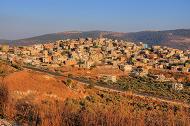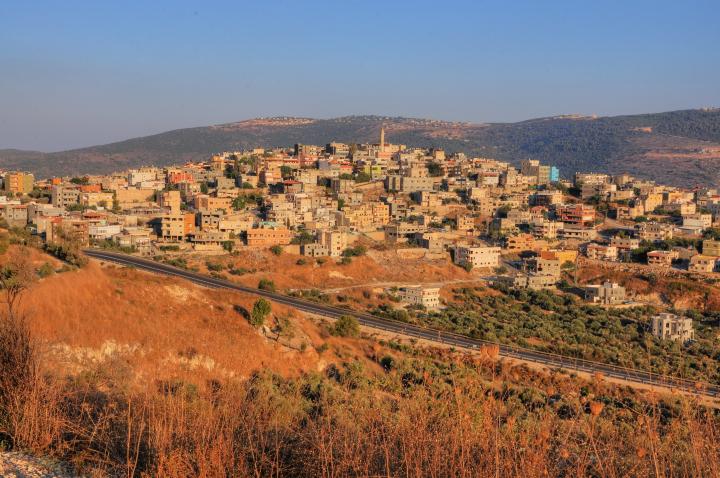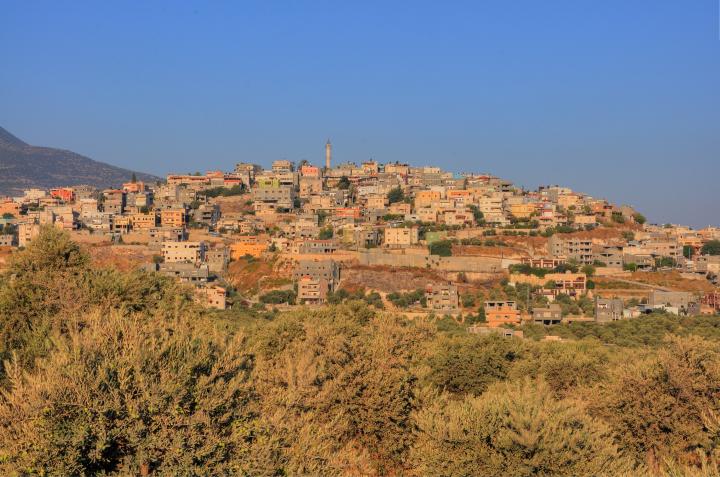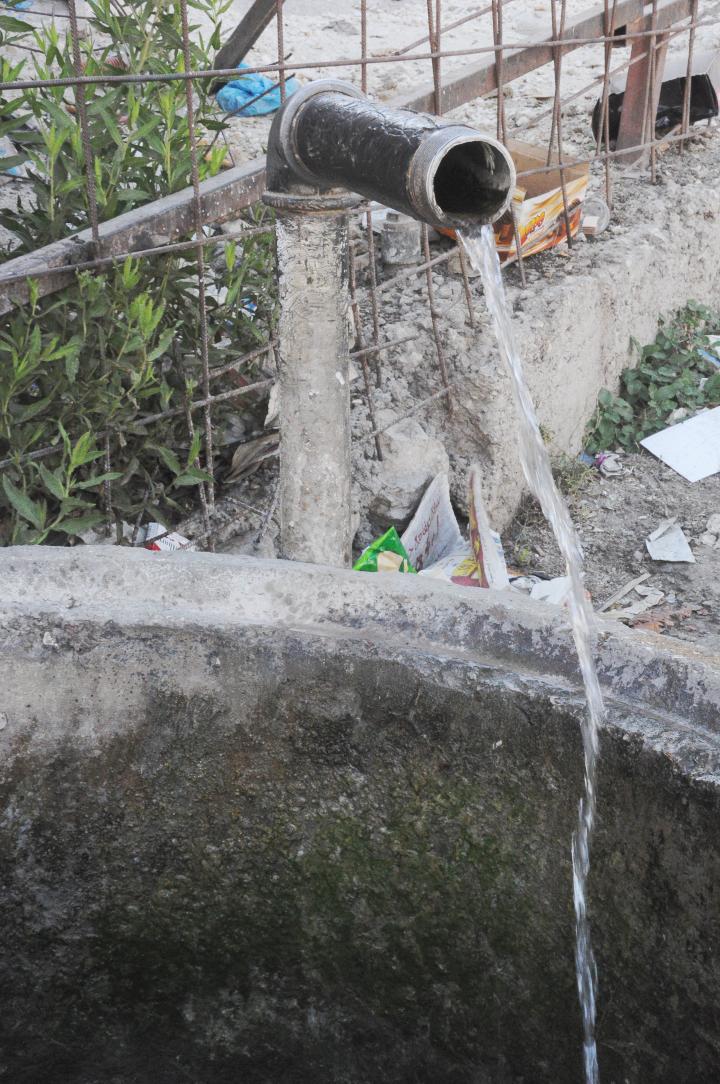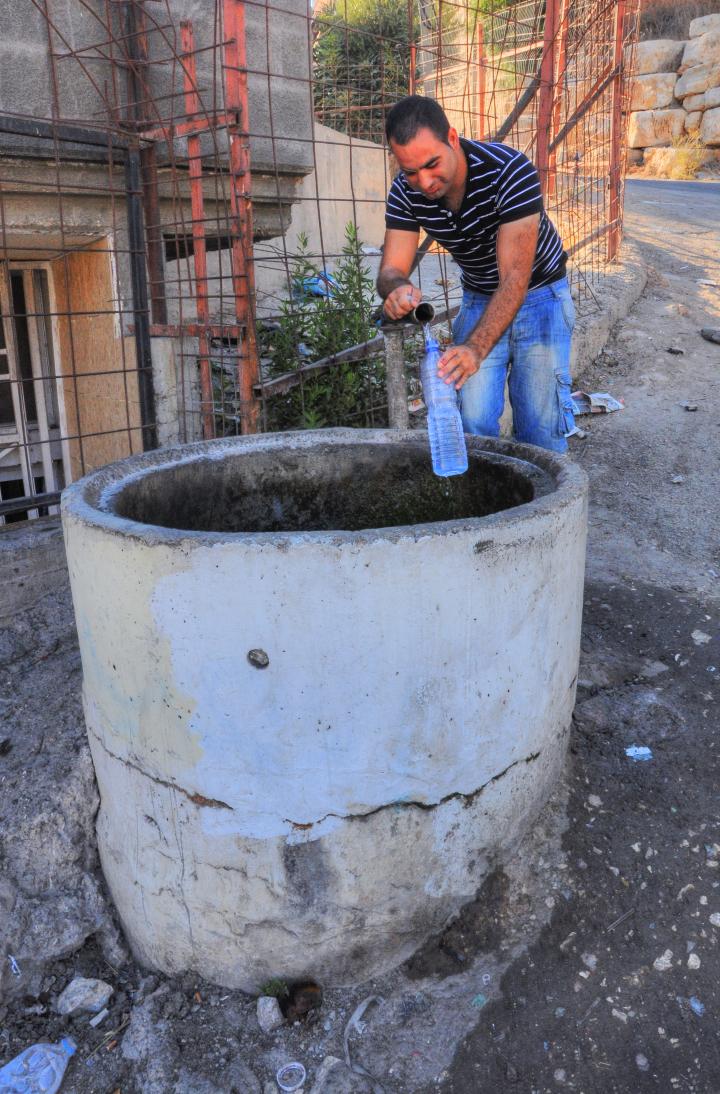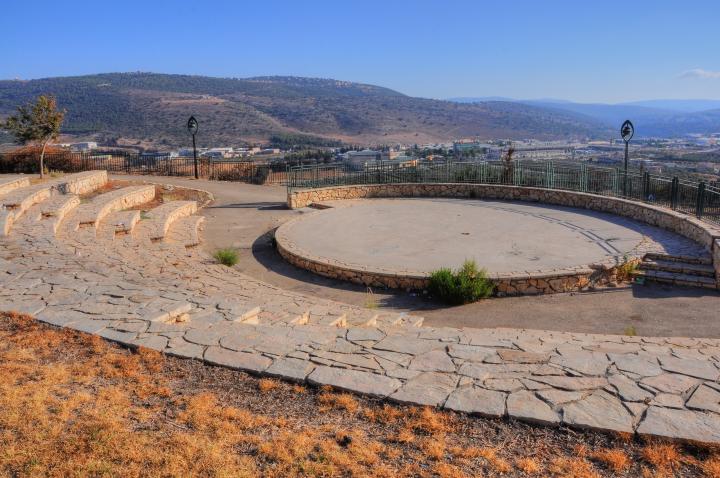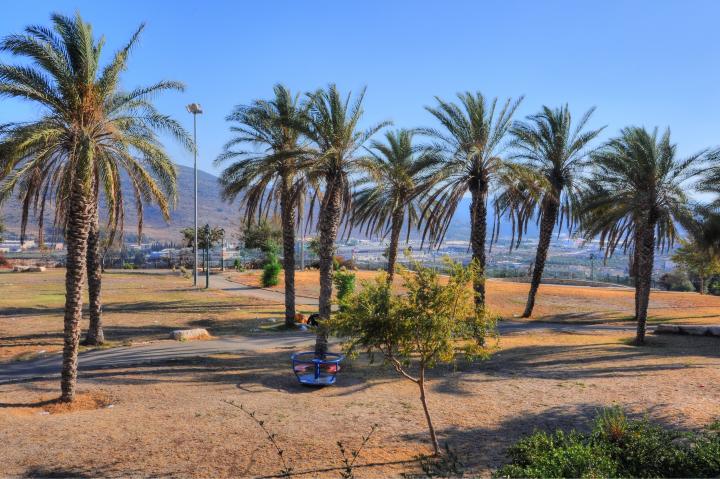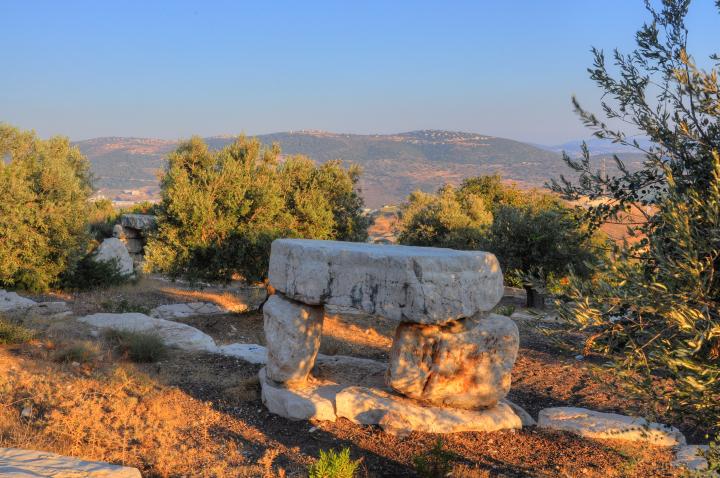A Muslim town north of Karmiel. It was a large village during the Hellenistic and Byzantine periods.
Home > Sites > Beit-Kerem > Nahef (Nahf, Nuhf, Nahf)
Contents:
Background
Location
History
Photos
Links
Etymology
Background:
A Muslim village north of Karmiel, with traces of ruins beginning from the Early Bronze period and culminating at the Hellenistic and Byzantine periods.
The ancient site was centered around a perennial spring, located on the foothills of the Matlul-Tsurim cliffs. It was a large Tel (multi-period mound), which commanded the traffic passing through the valley of Beit-Kerem, between the lower and Upper Galilee.
Location:
The village is located on the foothills of the high Matlul-Tsurim cliffs (alt 368M, 140M above the valley), east of the villages of Deir El-Asad and Bin’a.
The Tel (mound) of Nahef is located close to the spring on the top of the hill, buried under the modern village.
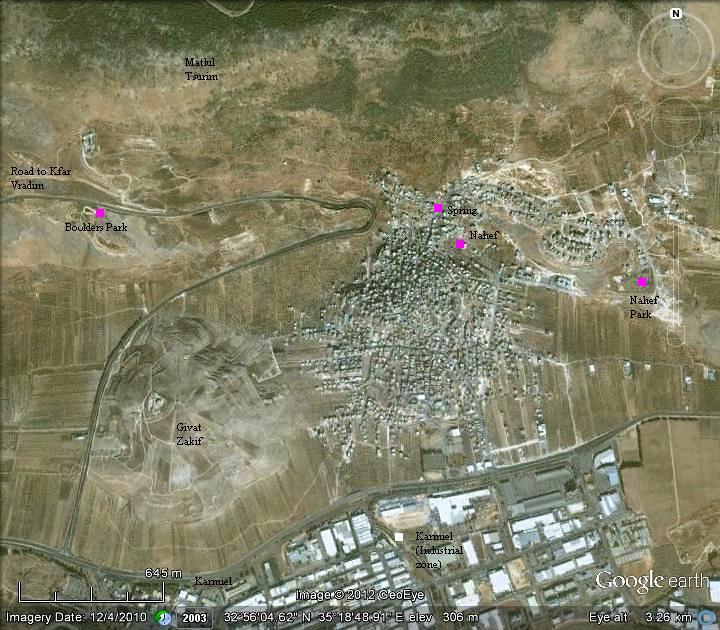
History:
Pre Historic periods:
Early Bronze ceramics (3150-2200 BC) were found on the western side of the town. The survey also identified Middle Bronze and Late Bronze ceramics (2200-1550BC, 1550-1200 BC).
Iron Age:
An Iron Age settlement was also located in Nahf.
Dorsey (“The Roads and Highways of Ancient Israel”) suggested that an important lateral road (“G6”, page 161) connected Akko thru Tell Bira and Neiel to Nahf, then along the valley thru Tel Beer Sheva to Hazor.
Hellenistic/Roman periods:
Ceramics, coins and structures were found in the center of the village. According to the excavations, the village reached its peak in the Hellenistic period. It was centered on the foothills near the perennial spring. The excavators (Howard Smithline 2001) concluded that Nahef was an important commercial center, which produced olive oil and wine.
After the Hasmonean conquest (2nd half of 2nd century BC) the village was destroyed. After a settlement gap, it continued to be inhabited until the Roman period, probably by Jewish settlers.
Byzantine period:
The area of Beit-Kerem became a major center of Christian monasteries, centered in the fortified village of Khirbet Bata. The caves in the hills around the valley were used by the monks for seclusion.
Many findings dated to the Byzantine period were found in the village, including a pottery workshop (Late Roman/Byzantine periods), stone oven, winepress, and rock hewn tombs. In 1874 the French M. V. Guérin reported on the ruins of a church, perhaps transformed from an early synagogue. These findings indicate a prosperous village during this period.
Crusaders/Mamluke periods:
During the Crusaders period the town was named “Nef”.
According to the Survey of Western Palestine [Sheet IV, p 208]: “Nuhf is mentioned among the Casales belonging to the Knights of the Teutonic Order about 1250 A.D. by the name Nef, with Beit Jenn, Jalun, and other places in the same neighbourhood”.
On the north side of the town are shrines dedicated to the warriors who fought the Crusaders – the Maqams of Sheik Rabia and Sheik Mahmud.
Ottoman period:
In the PEF map (1878) the site is listed as “Nuhf”. It is seen below, indicated by a red marker. They describe Nuhf as [SWP report, p. 203]: “A village, built of stone, containing about 200 Moslems, in plain, with olives and arable land ; water from cisterns and a spring. Guerin says that there are here 400 Moslems with a few families of Schismatic Greeks”.
On the archaeological part of their report of the Survey of Western Palestine, the authors Conder and Kitchener reported on Sheet IV [p255]:
“Two broken pillars were seen, and traces of ancient remains. This place was called Nef in the time of the Crusades. Guerin found there, ‘near a little mosque, a certain number of regular blocks and three broken shafts, which prove that there was once here a building of some kind, now destroyed from top to bottom. Was it a synagogue, later on transformed into a church ?'”
Part of maps Sheets 3 & 4 of Survey of Western Palestine,
by Conder and Kitchener, 1872-1877.
(Published 1880, reprinted by LifeintheHolyLand.com)
Notice the Maqam of Sheik Rabia to the north of Nuhf, and the roads that pass the village on both sides.
Modern times:
The construction in this condensed town wiped out most the ancient remains. Several salvage excavations were conducted in the village (Hasson 1970; Sussman 1982; Vitto 1986; Smithline 2001; Tepper 2003). The findings included hewn tombs, structures and installations dated from the Early Bronze period, Hellenistic, Roman/Byzantine and Crusaders periods.
Photos:
(a) General view
A great view of Nahef can be seen from the road from Karmiel towards Kfar Vradim, which passes on the north and west side of the village. While passing through this road, this picturesque scene of the villages catches your eyes.
Click on the photos to view in higher resolution…
The next picture was taken from the foothills of “Givat Zakif”, which is located to the south-west of Nahef. The minaret tower of the mosque is located at the top of the hill, with the hills of Matlul-Tsurim seen in the left background.
(b) Spring
The source of life in the ancient village was the spring (El ‘Ain). It is located on the north high side of Nahef.
The residents come here to fill up their bottles. Indeed, the water tasted great!
(c) Nahef Park
A new park was constructed on the east side of the town, in an abandoned mine.
(d) Boulders garden
A garden is located outside of the village, on the side of the road that ascends north from Nahef towards Kfar Vradim. In it are boulders arranged in various forms.
From the observation point is a great view of Karmiel and the valley of Beit Kerem.
Links and references:
* Archaeological:
- Nahf – salvage excavations [Hadashot Arkheologiyot 117]
- Nahf – Final report [Hadashot Arkheologiyot 119]
- Nahf [Hadashot Arkheologiyot 124]
- Results of three small excavations at Nahf (Atiqot 59, pp 87-101)
* Other:
- Kefar Nahaf – council’s web site (Hebrew)
Etymology (behind the name):
- Nahef/Nahf/Nuhf/Nef – unknown origin for the village’s name. Perhaps based on the Arabic word meaning thinness.
BibleWalks.com – Experience the Bible by foot
El Khader<<<–previous Beit-Kerem site—<<<All Sites>>>
This page was last updated on Aug 17, 2023 (new links, Dorsey)
Sponsored links:
